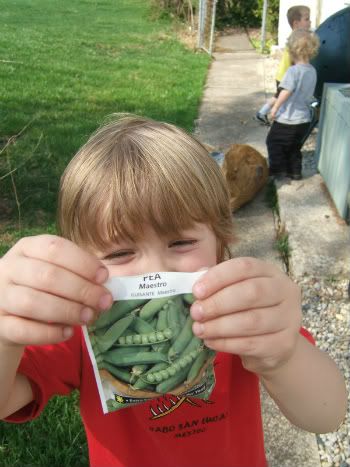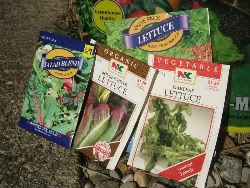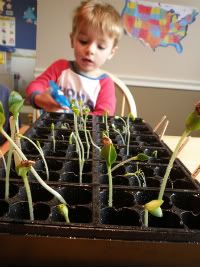
"The man who worries morning and night about the dandelions in the lawn will find great relief in loving the dandelions."
-L.H. Bailey, Manual of Gardening, 1910
My yard is being invaded, taken over by dandelions.

I thought about eating some. Apparently, this idea is very popular. When I was a kid, my brothers and i would pick the yellow flowers, dip them in flour and fry them (but isn't just about anything edible once you batter and fry it?). It wasn't until I received a bundle of dandelion greens in my CSA pickup last year that I ever realized the greens are edible and tasty. In fact, according to famous cook Mark Bittman, "dandelion greens have the distinction of being among the most vitamin-packed foods on the planet." Who knew? But somehow those dandelions from the CSA seemed bigger, more legit, less...weedy. I just can't bring myself to pick a bunch out of my own yard for a salad. At least, not yet.
Through the eyes of children, dandelions are simply magical. Kids don't care one bit if the yard they play in is consistent and 'clean', blemish free. In fact, a dandelion-less yard is actually a huge disappointment! Watching kids with dandelions takes me back to my own childhood, and the memories are so, so sweet.











A little back story. Two springs ago, the nice, reasonably priced lawncare service that I depended on to eradicate my pesky dandelions mysteriously stopped spraying my lawn. They remembered the neighbors to the left, and the neighbors caddy-corner to my lot, leaving the strong chemical smell behind with the promise of lush green weed-free lawn. But the hose was not rolled out to my yard. The trucks left, and no bill was left on my door.
Hmm, I thought. The same lawn service had made a one-time chemical dumping trip to my house each spring for at least 6 years. Service was delivered in a timely manner, just as pesky weeds were making their vigorous comeback, unless a call was made to cancel. I never called to cancel, but apparently they wanted to cancel me. Well, I would just have to contact them and get it worked out, before the lawn turned into a mess. But, I never called their number. Now, I'm not sure I ever will.
A year had passed with my chemical-free lawn when I became very interested in starting a garden, using organic methods. I had really never thought about the chemicals on my lawn and where they might wash away to, or what else would be affected by my desire for a shiny, blemish-free green carpet outside. As I began reading stacks of books from the library about organic gardening and sustainable living, I began to realize that a chemically enhanced yard did not really jive with my newly forming ideals. If I wanted to start an organic garden, and try to avoid chemicals, what sense would it make to wash the yard in (very stinky) chemicals every year?
That spring, as my mind churned with subtle-yet-life-altering shifts, the chemical truck once again skipped my house, and I took it as a sign (okay, goofy, I know) that it was just meant to be. My lawn will go au naturel from now on, I pledged, no matter how unsightly. I have a confession to make, though. The idea made me squirm. A little ball of fear lodged into my gut: "What will the neighbors think? Just how ugly is this lawn going to get?" I did always take a certain amount of pride in that perfect lawn...but WHY? When did immaculate and manicured lawns become a symbol of pride, a goal of so many of us in the suburbs? Here is a very interesting historical theory on our obsession with lawns: Read This: It's Quick and Painless 
Since I made that promise NOT to call the lawn service who quietly dumped me, my relationship with the dandelion has fluctuated wildly. One day I'm loving seeing the dots of yellow, the perfect spheres of impossibly fluffy white. The next day I may be in a foul mood, with my house a total mess, and I'm looking out at my little suburban front lawn with its growing army of spindly, agressive weeds and thinking it just looks like a disaster. My mind still clings to that image of perfection, as I compare my yard to the yard next door--vast, lush, green and virtually yellow-dot free. But, when I'm gazing at the neighbors lawn, am I admiring the lush green...or just the size of her lot (she has an amazing double lot, more lawn than I can imagine having, and I admit it makes me 'green' with envy)? Do I really want a 'perfect' yard, or am I beginning to evolve within my mind a new kind of 'perfect'? What do I picture when I think about the space I want to surround my home?
My new perfect is not a wild, weed infested jungle. I admit that I still cringe a bit when I see lots brimming with dandelions and not much else. The 'new perfect' that now I visualize contains things like patches of clover along with the grass. A dandelion here and there. A patch of wildflowers. A fruit tree, maybe...and perhaps a row of blueberry bushes. Maybe a keyhole garden (just the name 'keyhole garden' sounds magical to me). If enough space allowed, a covered wooden swing or bench. A pathway winding in and out of various small growing spaces. In other words, a small-scale permaculture. Nothing too wild, and nothing that the neighbors would abhor (the fact that I live in very close proximity to many people who take deep pride in the appearance of their property is not lost on me, and I do want to respect that). I dream of transforming my yard into a handy, useful living space that also happens to grow pretty things and delicious food, and I'd love for it to be beautiful enough for my suburban neighbors to admire it. I don't live in the country with a spacious property, so the freedom of letting things go wild is a bit hampered. I live on a very small lot, and a sort of controlled, pretty chaos may suit my needs AND the needs of the neighbors. Not a barren green carpet. Pieces of green carpet, sure, but within a patchwork of other wonderful things. Here's an example I found online of a former front lawn, turned into something more beautiful:

Here's another example of someone ditching the whole 'front lawn' idea, and this one does away with any fanciness--just boxes of food, thank-you-very-much:

Or here is this guy, who has transformed his yard into something completely opposite of a typical 'front yard', and the line of division that seperates his from the neighbor's is so obvious it smacks you in the face. I am intrigued...but my neighbors? They just might be annoyed:

In some ways I prefer the first type of yard. More of a little oasis; a peice of art. There are so many different ways to transform a front yard, and to get away from a bare green canvas. I am constantly picturing what my little front yard could be, even though for now it's all I can do to keep it from looking like this:
So, I dream of a beautiful lawn. But not necessarily a spotless lawn. Where does my daydreaming of permaculture-ish, fun little spaces leave my love-them-hate-them relationship with dandelions?
Today, I love them. The kids and I went on a field trip to a park that has a nice sprawling half acre or so of lawn. The sun warmed us as we wandered, skipped, and frolicked in this lovely meadow. Dandelions were of course picked and the seeds blown into the air, with delight. When you really stop and look at them, dandelions are the coolest thing ever. When they are so full and white and fluffy, they are magical. The tiny white parasols fly off with just a tiny breath, drifting sightlessly away like our childhood dreams. When the dandelion blossoms are thick and cheery and school-bus yellow, they make beautiful bouquets and fit nicely tucked behind an ear. The kids and I drove home from our field trip, and as we pulled into the driveway, the stubborn dandelions that poked through the clover didn't seem so unsightly. (Clover, by the way, is so completely lusious and soft and beautiful--not to mention a nitrogen fixer! )
A few nights ago I spent an hour digging out dandelions (because they will NOT yield to being simply pulled, ever. They must have the strongest roots of any plant I've met...budge-proof anchors). Perhaps on my small lot, digging out the excess will have to be sufficient if I feel there are just too many. I can get out there and physically remove them with elbow grease instead of dumping weedkiller all over. I'll never get to them all, because dandelions reproduce faster than--well, rabbits. Especially when the kids and I are out there blowing their parasol seeds everywhere. Evolutionarily speaking, they are A HUGE success...they continue to thrive, multiply and carry on, despite our suburban loathing of them. Hardy creatures, they are! But, no matter how much newfound love and respect I can muster for these weeds, I just can't, for now, let them take over.

There is a huge bonus that I haven't yet mentioned. A nice collection of dandelions is VERY worth keeping in the yard: honeybees love them. And we need to keep the honeybees content in any way that we can.
As I dream about transforming my yard into a biologically diverse living space, I will learn to coexist with these weeds. It's getting easier the more my mind relaxes about what constitutes a perfect yard, a perfect life. This quote sums up my loss of interest in chemical treatments for the lawn really well:
When we dump toxic chemicals (insecticides and oil pollution,
for instance) into the Earth's air, water, and soil,
we are upsetting untold numbers of life-enabling processes
by killing outrageous numbers of organisms
that are profoundly important to the continuance of
Life on Earth.





























 For good measure, Simon taped some bubble wrap around it.
For good measure, Simon taped some bubble wrap around it.


